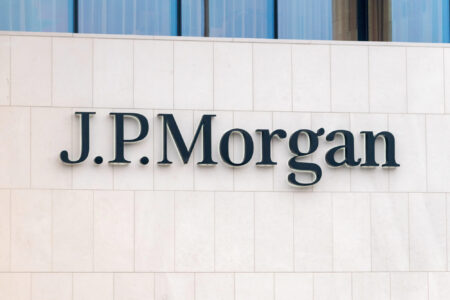What happened this week around blockchain and cryptocurrencies? The most relevant local and international events as well as appealing background reports in a pointed and compact weekly review.
Selected articles of the week:
The publication “The State of Crypto: Corporate Adoption” examines the adoption of crypto, blockchain, and Web3 technologies by Fortune 100 companies. Prominent firms such as Google, Goldman Sachs, IBM, Microsoft, and JP Morgan are investing significant resources in these groundbreaking technologies, with the intention of updating the global financial system and gaining a competitive advantage. After all, the integration of blockchain offers transparency, security, and automation of processes. At the same time, the technology, financial services, and retail sectors are driving the expansion of Web3. Countries that facilitate corporate collaborations with regulatory authorities and government promotion will favor transformative growth and innovation in this industry, and assume a leading role.
Fortune 100 companies are investing heavily in crypto, blockchain and Web3 technologies to modernize the decades-old financial system.
In less than a year, Bitcoin will undergo another halving phase of its inflation rate. The so-called “halving” occurs every four years and is a crucial element of Bitcoin’s monetary policy. This predefined event limits the quantity of newly created Bitcoins, thus guaranteeing a deflationary trend. Historically, the halving mechanism has had a significant impact on the price cycles of the digital currency. Therefore, it is essential for investors and market participants to understand the consequences of the halving and its associated effects on the supply of Bitcoin, as well as its historical price trends.
In less than a year, the bitcoin inflation rate will be reduced by another “halving” – all relevant information.
Chainlink Labs, a company in the blockchain sector, is initiating a protocol called CCIP, which enables a connection between traditional financial institutions and blockchains. CCIP aims to create a link between the on-chain and off-chain world, with SWIFT already exploring the possibilities of this protocol together with numerous financial institutions and infrastructure providers. In addition to SWIFT, other major players such as SIX Digital Exchange (SDX) and companies such as the Australia and New Zealand Banking Group (ANZ), BNP Paribas, BNY Mellon, Citi, Clearstream, Euroclear, Lloyds Banking Group, and The Depository Trust and Clearing Corporation (DTCC) are participating in the joint efforts towards blockchain interoperability.
The CCIP interoperability protocol connects various blockchains to SWIFT and traditional financial institutions.
The NFT market has long been dominated solely by OpenSea. Blur, an innovative aggregator that launched in October 2022, is now a serious competitor. What’s special about Blur is that it simplifies NFT trading and provides users with convenient price comparisons and efficient portfolio management. This user-friendly approach is equally popular among traders and collectors. In the face of rapid NFT growth and associated liquidity problems, Blur is introducing “Collection Bids” to allow minimum selling prices for valuable assets and to provide liquidity to illiquid market segments. Additionally, Blur’s new peer-to-peer protocol Blend for NFT loans strengthens the appeal for users who are looking for financial opportunities in the NFT ecosystem.
Blur is an innovative NFT aggregator that achieved great attention through its airdrop and NFT lending through Blend.
In addition: A new study investigates how technological developments, particularly the introduction of OpenAI’s ChatGPT model, can impact financial markets and crypto-assets. The study examines how AI and cryptocurrencies, two significant technological trends of the modern era, are beginning to converge.
A new study looks at the convergence of two major technological trends: artificial intelligence with ChatGPT and cryptocurrencies.









